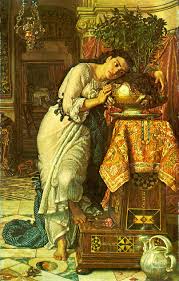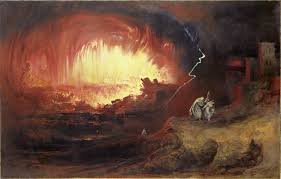Tuesday, 30 March 2010
And the moral of the tale is...er
http://www.guardian.co.uk/commentisfree/2010/mar/27/fairytale-fantasy-childrens-books
I can’t say I entirely agreed with her and I posted a comment that, with your forbearance, I shall repeat here:
Bidisha falls into the trap that a lot of political minded people do of assuming that stories are actually about something else, a Dan Brown style code to be deciphered by the wise. But sometimes a cigar is just a smoke and a story is not necessarily a fable and it is, I think, the stories that just are stories that survive to following generations. ‘Eric or Little by Little’ anyone? Popular enough in its day, now pretty much forgotten as opposed to 'Wind in the Willows' or 'The Railway Children' which don't really say anything beyond how cool it is to live near a river or a railway.
Eric, or Little by Little by Frederick W Farrar, for those who do not share my interest in the history of children's books, is in the words of the author ‘…the history of a boy who, in spite of the inherent nobleness of his disposition, falls into all folly and wickedness, until he has learnt to seek help from above.’ I have not read it and although that precis makes it sound rather fun, I gather that it is not.
Anyway, to return to the morals or otherwise of stories. It is, of course, not as simple as I make out above but forgive me, I was writing for Guardian readers and they can be simple souls, bless. C S Lewis’ Narnia books are an obvious exception by my overarching rule and Charles Dickens wrote Nicolas Nickleby partly to expose the dodgy boarding schools of his day. But I still hold that it is possible to read too much into a story in many cases and that in our utilitarian age we sometimes try too hard to identify something that simply isn’t there and forget that the story can be its own sole reason.
PS
That was weird. Blogger decided, for reasons best know to itself, to translate the title and labels into Hindi without so much as a by your leave. Odd that.
Saturday, 13 March 2010
Meretricious, moi?
The usual suspects shuffle to the fore, ashamed and shy, avoiding each others’ glances. Of course we must have accuracy, flexibility, a knowledge of what we are trying to achieve and who the reader is going to be. Of course we must have reliability and punctuality. Douglas Adams could get away with missing deadlines, the majority of us cannot. Being an established bestseller can excuse a great deal, guaranteed sales soften late submission. Spelling and grammar must be tools we are comfortable with while remembering always David Crystal’s dictum that the only true crime against grammar is ambiguity. And at all times we must be mindful. Mindful of the requirements of the client, the requirements of the piece and above all else, our own limitations. What makes a good writer? Honesty? Maybe. So it is with that thought in mind that I give my true answer: Damned if I know.
I don’t think they’ll be asking for my services in the near future. I particularly like the Delphic remark about grammar which I have attributed to David Crystal who never did me or mine any harm. I have no idea what got into me.
On the other hand, it is exactly one hundred and fifty words.
Friday, 12 March 2010
I can believe six impossible re-imaginings before a sequel
Now you’re all probably aware that the film is in fact an original story featuring characters from Lewis Carroll’s Alice’s Adventures in Wonderland and Through the Looking-Glass, and, What Alice Found There (credits for getting the titles pedantically correct please) but which picks up when Alice is nineteen and under pressure to marry someone she does not love.
And here’s the odd thing (note also the scrupulous avoidance of the word ‘curious’). Tim Burton’s film has been described as a re-working or a re-imagining but never as what it actually is, a sequel. I assume that Disney did some research and found that the word ‘sequel’ did not sit well with their target audience, or something equally odd. However, it does seem appropriate that the latest and most anticipated version of the Alice stories should come with a confusion over what to call it. Apparently for Tim Burton and the Disney Corporation, like Humpty Dumpty, words mean what they want them to mean.
Wednesday, 10 March 2010
Please Don't Touch
 At the
At the 
This was one of those questions that appear obvious until you have to actually answer them. The best I could come up with, under his polite scrutiny, was that as a culture we in the West value highly the original object itself, almost to the point of iconography. Talking later to a friend and colleague from my book dealing days confirmed this idea. Collectors value a first edition of a book over a later identical or even better edition. The only other theory I could come up with was the idea of originality. We value the object, the painting itself as a tangible thing, because until Hunt laid down his brushes, it never existed before. There may be earlier pictures on the same subject but this one, as Betjeman puts it, ‘interprets his age in a way so pleasing to ours’ and so we value it, so much so that we place a barrier before it and stop viewers from even touching it.* We must stand at a respectful distance and worship. My companion heard me out but I’m not sure I persuaded him that we’re right in our attitudes. But then I did not entirely persuade myself. And as it happens, I prefer the John Martin’s The Destruction of Sodom & Gomorrah anyway.

You have to admit, it is livelier.
*Very impressive attendant at the gallery who explained to my companion why visitors are asked not to touch the pictures with both great politeness and unpatronising reasons.

